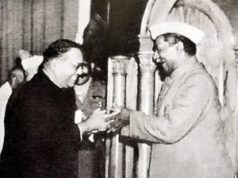Makar Sakranti, a joy-filled festival marking the end of winter solstice, also marks the start of the renowned International Kite Festival (Uttarayan) hosted annually in Gujarat. Welcoming participants from all over the world, the festival is one of the major attractions for tourism in the state. This enthusiasm for kite flying, however, is not restricted to Gujarat. Clear blue skies filled with kites of all shapes and sizes on Independence Day, is a warm memory shared by all. However, it perhaps is a matter of great irony that this experience which forms one of the most characteristic aspects of our independence day celebrations, still falls under the shadow of regressive colonial-era laws.
As per an existing law i.e. the Aircraft Act (1934), a kite (defined as an ‘aircraft’) cannot be flown without a license authorising its use, manufacture and maintenance. Any person found to be violating this law is liable for both- a hefty fine as well as significant time in prison. The absurdity of the Act is further emphasised in Section 11 wherein any person found guilty of flying an aircraft so as to cause “danger” can be jailed for a term of 2 years or fined up to ten lakh rupees or both. The same remains the case for balloons as well.
This is problematic on two levels: i) the clubbing of relatively harmless objects such as kites and balloons with more serious machines like airships, gliders and flying machines under the tag of ‘aircraft’ is akin to comparing hand catapults to assault rifles, ii) the demand for same extent of regulation and intervention in the use of kites and balloons as that in the use of an aeroplane is unreasonable given the commonality of the former.
Additionally, for a piece of legal literature that has been overly generous in its definition of ‘aircraft’, the Act is eerily silent on what constitutes “danger” in Section 11. This lack of clarity, although seemingly hilarious in its obscurity, wields the power for the State to manipulate and harass the general public as and when it deems fit. This gaping leeway for interpretation could have as its prey an innocent child flying a balloon at India Gate on Children’s Day or even the several kite-flying competitions held in the country on Independence Day. What is more bewildering is that a law such as this has not topped the list for repeal despite the aggressive pursuit of repealing obsolete laws in the past few years.
Reflecting on the antediluvian demands of the Act, the need to beseech an amendment in the rule of law cannot be stressed enough. Enacted in 1934, the Aircraft Act aimed to provide for a better “control of the manufacture, possession, use, operation, sale, import and export of aircraft”. However, 84 years hence, the Act is a classic example of a law out of step with the times.
Post Disclaimer
The opinions expressed in this essay are those of the authors. They do not purport to reflect the opinions or views of CCS.





